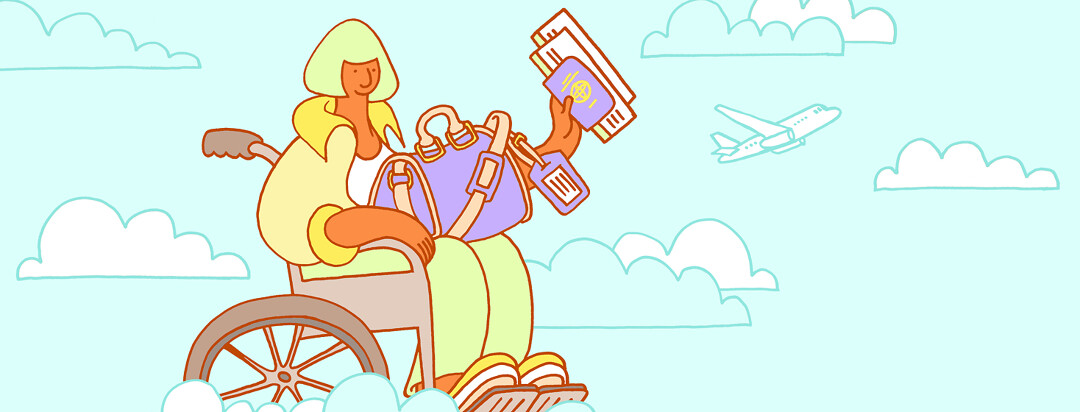International Travel With Narcolepsy
Travel excites me for 2 main reasons: the anticipation of new adventures and the joy of seeing familiar faces.
Travelling can be a stressful experience for me because no matter how much I prepare, things do not always go as planned. Delays, cancellations, traffic, or accidents can lead to changes to well-thought-out plans.
The following are some ways I have coped with narcolepsy when traveling long distances:
Booking early and requesting special assistance
Always book in advance. Once booked, I request "special assistance with wheelchair" from the airlines. This is something that may at first make you feel guilty as a person with narcolepsy. Why would you need a wheelchair since narcolepsy does not affect your legs?
The answer lies with the fact that a person struggling with symptoms from an invisible illness might go unnoticed by the people around them. No one might offer you help, so make sure to wear a medical necklace.
Special assistance keeps my stress down
My travel experience changed completely with special assistance. Once I sign in with them at the airport, I allow myself to fall asleep because I do not have to worry that I could miss my flight. The stress I experienced before using special assistance was intense and exhausting.
What used to cause me stress
Trying to stay awake whilst waiting to board, worrying my stuff would not be safe if I fell asleep or that I could miss the flight whilst sleeping. Not to mention the exhaustion of traveling through airports from the terminal to the gate, making me even more tired/sleepy, which was even worse in large airports.
Benefits of assistance
With special assistance, the responsibility of ensuring that I arrive at the departure gate and board the flight on time is someone else's. Before you are dropped off, remember to use the toilet, as they will wait with your luggage. I forgot once and had to drag my hand luggage with me to the toilet. Another thing to do while you are in their care is to ask them to help you get water and snacks if you need anything.
What I bring for extra comfort
There are extra things that can make your journey more comfortable.
Travel pillow
A good travel pillow, preferably one with a covering that will help keep it clean. (I like the travel pillow by Raha)
Document holder
Carrying your passport and travel documents in a wallet around your neck can be very useful. In case you suffer a sleep attack or cataplexy, nothing will fall to the ground. The Anok travel wallet is waterproof and has RFID blocking, protecting your credit cards from theft.
Portable footrest
Another useful carry-on item is a portable footrest. I used it for the first time on my trip to New Zealand. It really was a game-changer. It allowed me to find a more comfortable position and get some good rest on the flight.
Packing cubes
Packing cubes help to organise your clothes. They can save you from stress when you arrive at your destination as your clothes are easily accessible.
Finding safe places to nap
It is important to know where to find safe places in the airport where you can sleep. A library is quiet and peaceful for a nap. I had a long layover at San Francisco Airport. It has a lovely library which I found perfect for undisrupted sleep. Carry along a travel blanket, if possible. All these items are available on Amazon.
Making travel easier
My hope is that with more discussion when people think of traveling long distances with narcolepsy, they will not just think of the difficulties and challenges.
With more information and shared experiences, they will see ways to reduce some of the challenges and experience how rewarding flying can be for prepared travelers.

Join the conversation